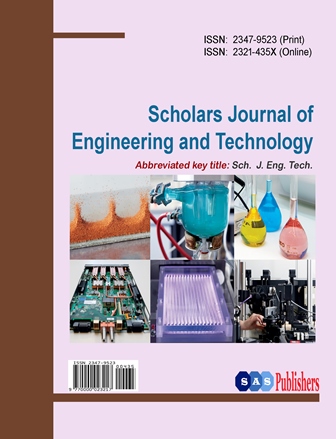+91-9365665504
+91-8724002629
submit@saspublishers.com / saspjournals@gmail.com

An International Publisher for Academic and Scientific Journals
Author Login
Scholars Journal of Engineering and Technology
Journal Home
Description
Editorial Board
Archives
Indexing
Statistics
Title : Scholars Journal of Engineering and Technology
Abbr : Sch J Eng Tech
ISSN (Online) : 2321-435X
ISSN (Print) : 2347-9523
Discipline : Engineering and Technology
Frequency : Monthly
Country : India
Language : English
Abbr : Sch J Eng Tech
ISSN (Online) : 2321-435X
ISSN (Print) : 2347-9523
Discipline : Engineering and Technology
Frequency : Monthly
Country : India
Language : English
10.36347/sjet
DOI
DOI
6.2
IMPACT FACTOR
IMPACT FACTOR
Current Issue : Volume-14 - Issue-01 ; 2026
Recently Published Articles
June 26, 2026 | Original Research Article
Artificial Intelligence-Driven Cybersecurity Framework Using Machine Learning for Advanced Threat Detection and Prevention
Anum Malik, Kaleem Arshid, Nooruddin Noonari, Rizwan Munir
Sch J Eng Tech | 401-423
DOI : https://doi.org/10.36347/sjet.2025.v13i06.005
Jan. 7, 2026 | Original Research Article
Analyzing Road Accidents and Prevention: Engineering Solutions and Geopolitical Implications for National Security
Lt. Col. Mohammad Mahbub-ul- Haque
Sch J Eng Tech | 41-47
DOI : https://doi.org/10.36347/sjet.2026.v14i01.003
Jan. 5, 2026 | Review Article
AI and Physics-Guided Multimodal Chemical Measurement: Unifying Spectroscopy, Chromatography–Mass Spectrometry, Electrochemical Sensing, and Chemical Imaging Via Data Fusion from Molecules to Materials and Devices
Ubaid Ullah Khan, Muhammad Umair, Ali Hamza Zahid, Maryam Aziz, Muhammad Umar Farooq Ahmad Kharl, Muhammad Aftab, Huraira Sayam, Muhammad Umer Farooq, Shariq Hassan, Waheed Zaman Khan
Sch J Eng Tech | 10-40
DOI : https://doi.org/10.36347/sjet.2026.v14i01.002





